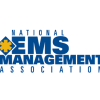First responder agencies experiencing personnel shortages due to military deployments will receive federal funding if Congress approves legislation pending in the Senate. The Strengthening Community Safety Act would create a federal grant program to reimburse local agencies for costs incurred when employees who are Armed Forces reservists are deployed.
The grants, administered by the Department of Homeland Security, would reimburse eligible agencies for such costs as salaries and benefits for replacement hires; overtime expenses related to personnel loss; and related equipment and maintenance activities. Grants would cover a six-month period and could not be used for federally funded positions.
Fire services and publicly or privately operated ambulance services authorized by a state to provide a rescue activity or prehospital emergency medical response would be eligible. The bill was referred to the Committee on Homeland Security and Governmental Affairs for consideration. The House has not proposed a similar bill.
FCC Urged to Name EMS in Broadband Plan
Emergency medical response organizations are urging the Federal Communications Commission (FCC) to name emergency medical services as eligible recipients of proposed broadband technology development grants for medically underserved communities.
The industry is responding to the June 2010 FCC proposal to expand broadband connectivity to rural areas in an effort to improve health care delivery. Under the proposal, up to $400 million annually would fund a broadband infrastructure to equip health care facilities with state-of-the-art diagnostic tools, yet EMS agencies are not mentioned on the list of agencies eligible for grants. Because EMS has not specifically been identified under previous programs, ambulance providers have been disqualified from past grant eligibility, says Kevin McGinnis, MPS, EMT-P, the FCC liaison for the National Association of State EMS Officials (NASEMSO). The FCC estimates that this broadband plan could revolutionize health care delivery by providing funding to more than 12,000 hospitals and clinics across the nation.
In a detailed position paper and letter, NASEMSO notes the integral role EMS provides in the delivery of health care in rural areas and the need for broadband capacity to transmit medical images and support new medical technologies.
NASEMSO asked organizations to sign on and drew support from such organizations as the National Association of Emergency Medical Technicians, the National Association of EMS Physicians, the National EMS Management Association, the International Association of Fire Chiefs, individual law enforcement organizations and the Association for Public-Safety Communications Officials, according to McGinnis.
The FCC will consider submitted comments and present a revised plan for comment before issuing a final rule. The June FCC Notice of Proposed Rulemaking document is here. The NASEMSO documents can be found at here.
Emergency Vehicle Safety Guide Published
A basic guide to help responders improve their on-duty vehicle and roadside safety awareness has been published by the U.S. Fire Administration (USFA) in conjunction with the International Association of Fire Fighters.
Vehicle crashes and roadway incidents are a leading cause of responders’ duty-related fatalities and injuries, and this study is an extension of the USFA’s ongoing efforts to improve awareness of the issue. The report provides several case studies of incidents in which responders were injured or killed to reveal the hazards responders face when operating vehicles and working at roadway sites. It also addresses the common causes of incidents and provides strategies for reducing and avoiding hazards. The latest information on emergency vehicle lighting and reflective markings, as well as safely and effectively managing roadway incidents, is also included.
“Best Practices for Emergency Vehicle and Roadway Operations Safety in the Emergency Services” is available here.
Standards Developed for Child Passengers in Ambulances
Because the EMS industry currently lacks a uniform procedure for transporting child passengers, the National Highway Traffic Safety Administration (NHTSA) organized a work group, which first met in July 2009, to develop consistent national standards and protocols concerning the safe transport of children in ambulances.
The agency has now published the work group’s findings, including the fact that an FMVSS 213 child restraint device designed for ambulance cot use provides better crash protection than adult cot restraints. The group also provides guidelines for other methods of safely restraining children according to their age and weight. In addition, the group presents both ideal and practical methods for transporting children under a variety of circumstances, such as those who are injured or ill but who do not require continuous medical monitoring or interventions and those who do require such monitoring. They also discuss safe transport of children who are not injured or ill but are accompanying a family member, those who require spinal immobilization and those requiring transport as part of a multiple-patient scenario.
The working group recommends that all EMS systems plan for situations in which multiple infants and children are patients or accompanying patients and urge that children transported on a cot be restrained with a five-point cot restraint system.
“Recommendations for the Safe Transportation of Children in Emergency Ground Ambulances,” which also contains
recommendations to government agencies and manufacturers, is at nhtsa.gov/staticfiles/nti/ems/pdf/EMSconfer
ence05aug2010.pdf. The project’s website is at nhtsa-ems.mci-it.com.
Medicare/Medicaid Chief Appointment Before Senate
In September, President Barack Obama resubmitted to the Senate his candidate, Donald Berwick, to run the Centers for Medicare and Medicaid Services. Berwick, who currently runs the agency, was a July recess appointment by the president, bypassing the Senate, where the appointment was held up by Republicans.
Berwick formerly served as president and CEO of the Institute for Healthcare Improvement and as a professor at Harvard Medical School and the Harvard School of Public Health. He has been a pediatrician, adjunct staff in the Department of Medicine at Boston’s Children’s Hospital, a pediatrics consultant at Massachusetts General Hospital, chair of the National Advisory Council of the Agency for Healthcare Research and Quality and an elected member of the Institute of Medicine, serving on its governing council from 2002 to 2007.












